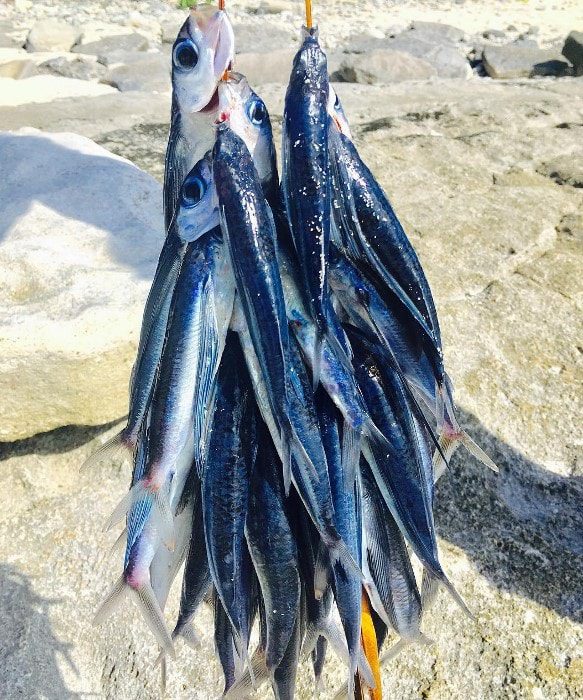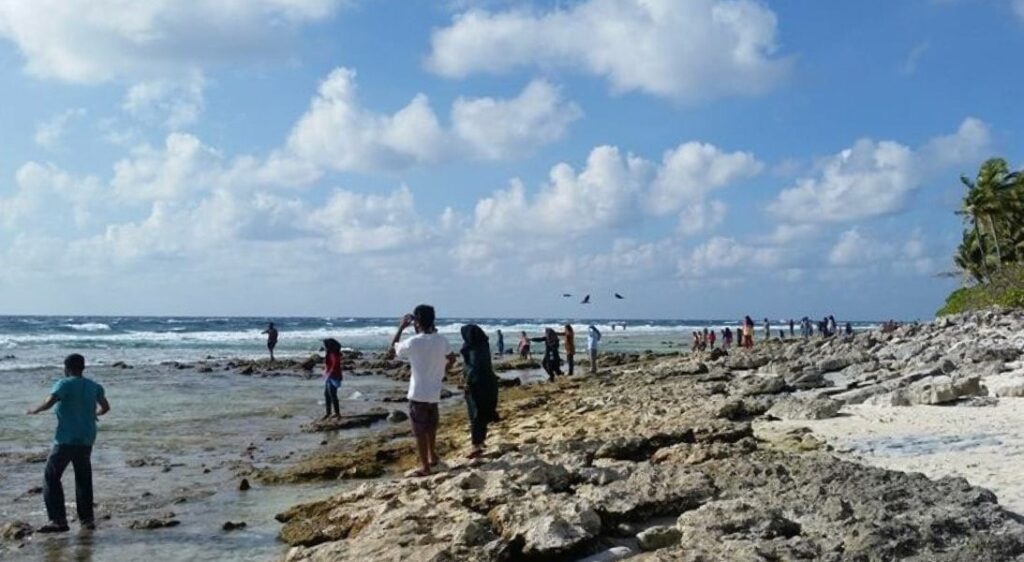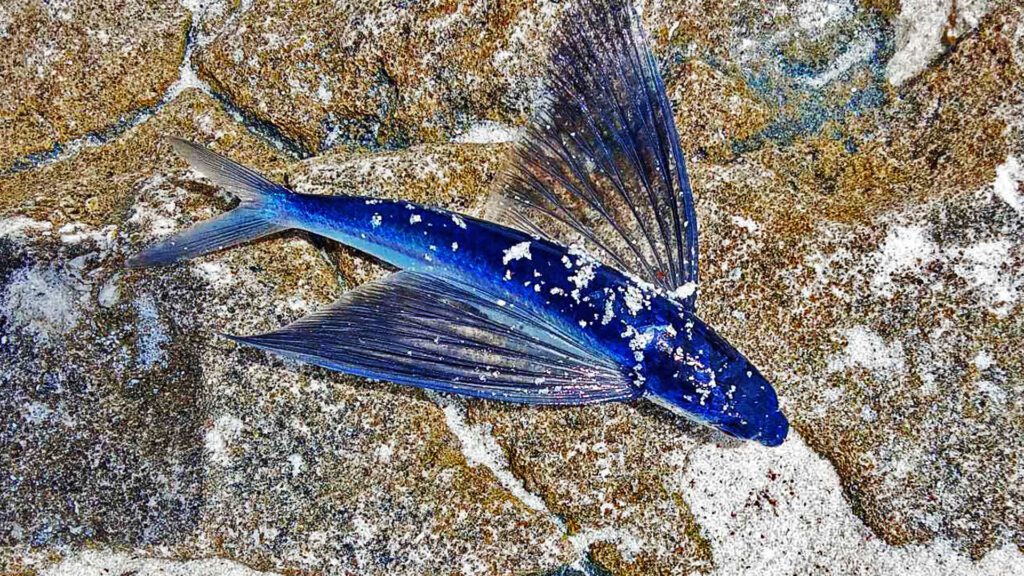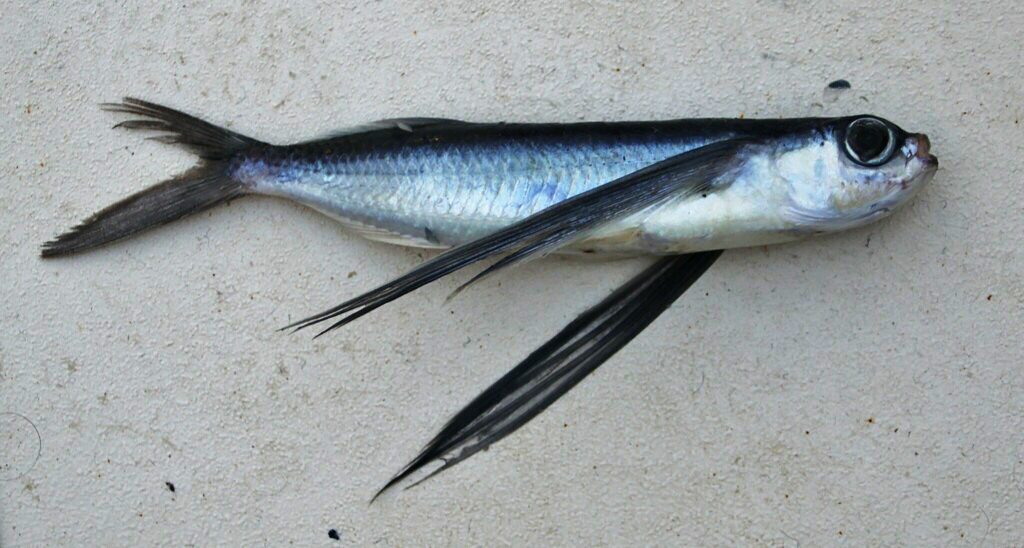
Fishing, the breathtaking sceneries, and the natural phenomena of Fuvahmulah are not only about adventure and the biggest adrenaline; they’re also an opportunity to connect with nature and appreciate the island’s distinctiveness from a unique perspective. During the southwest monsoon season (locally known as hulhango, normally from May to October), flying fish prevail around Fuvahmulah. These humble fishes are surrounded by predators—tuna, sharks, trevally, mahi-mahi, and other fish. And up in the air, the aggressive frigate birds, locally known as huraa, loiter in the air eagerly waiting for the flying fish to leap out of the water. The frigate birds have excellent eyesight. They easily spot telltale splashes on the surface.
As the trevally, yellowfin tuna, and mahi-mahi race after the schools of flying fish, frigate birds circle above, waiting for prey to break through. As the flying fish leap out of the water, the frigate birds glide down to scoop them up. Some fish land on the reef; the other fish glide directly towards the palm trees, land on the sandy beach, and the thick vegetation. In the reef front, the hungry eels and trevally ferociously attack and pursue them. Again, this causes the fish on the reef to leap out of the water and glide toward land.
The miracle!
This streamlined torpedo fish jumping out of the water and gliding towards the beach is a wonderful excitement and joy. Witnessing this uncontrolled excitement, people who are ready to catch flying fish also run in different directions. In the frenzy to catch and collect the fish, the crowd of people becomes uncontrollable: hassling and struggling to collect the slippery fish is perhaps a “fight.”

Some fish that land in the reef water swim along the shallow water of the reef front, and other fish drift with waves, forming “hulhanmaha ralho,” a breaking wave on the beach that consists of hundreds of flying fish. In early days, people used mudeyshi, a woven container made up of palm leaves and various containers, to collect the fish. This natural phenomenon is common between Thoondu and Dhadimago, the northeastern area of the island. People gather in large groups to catch as many flying fish as possible. People of all ages indulge in this mental agitation. Schools of fish glide towards the beach, making it easy for individuals to guess their direction. In the early days, some individuals collected around 100 to 500 fish.
Waiting to indulge in this frenzy requires several hours of rest and patience. In early days, people indulge in various other activities during their spare time. Staying under the thick bushes, they share stories, sing songs, and sing raivaru (a type of Maldivian traditional singing, where letters are swapped to be sung in a certain melody without accompaniment). These people write notes on palm leaves with knives and give them to their flirts or secret lovers. This activity creates unity and greater social bonds. People marvel at the phenomenon, relishing the adrenaline rush against the backdrop of Fuvahmulah’s enigmatic landscape.

